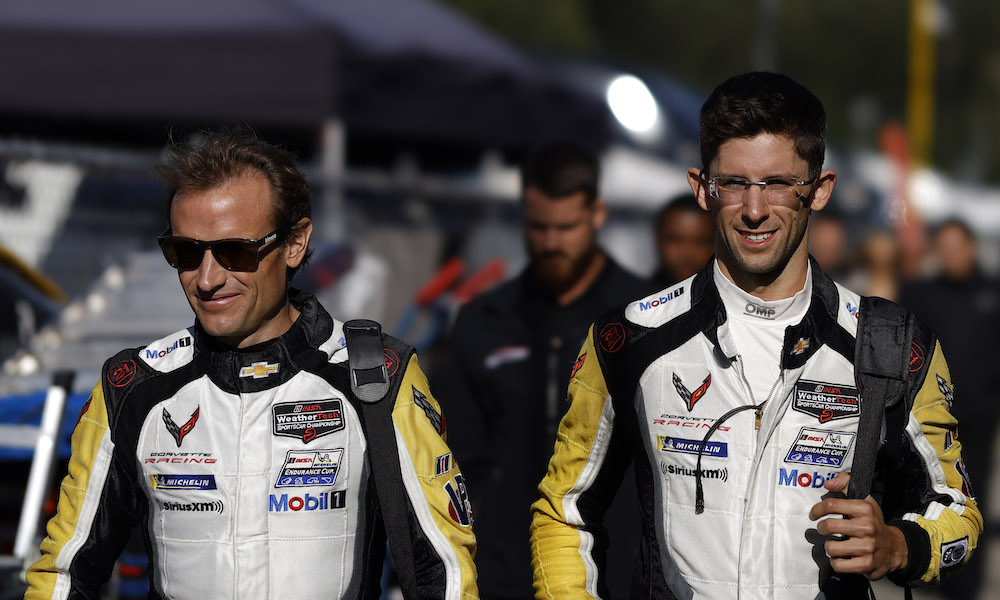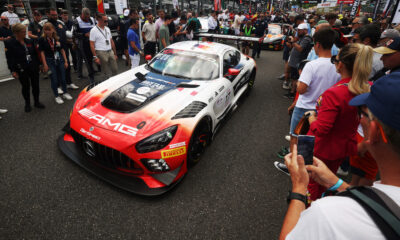
Photo: Mike Levitt/IMSA
Antonio Garcia believes Corvette Racing left “nothing on the table” during its first season in the IMSA WeatherTech SportsCar Championship’s new GTD Pro class.
Corvette found itself in a unique position when IMSA transitioned from the GTLM era into the new, GT3-based GTD Pro for this year.
As opposed to all of its rival manufacturers in the new class, Corvette lacked a pre-made GT3 platform to race.
Instead, the American squad modified the existing Chevrolet Corvette C8.R to meet GTD regulations, which included the introduction of an ABS system that it trialled during the Detroit Grand Prix last year.
The GTD-spec C8.R is set to carry over into next year before the Corvette Z06 GT3.R takes over in 2024.
Corvette’s first car built to full GT3 regulations was shaken down earlier this week.
After struggling at the Rolex 24 at Daytona, Corvette’s interim car took a maiden class win during the Mobil 1 Twelve Hours of Sebring but has not returned to the victory lane since.
Instead, Pfaff Motorsports put together a series of five class victories, which has put it in prime position to clinch the GTD Pro title when Motul Petit Le Mans starts on Saturday.
Garcia indicated to Sportscar365 that the first season after the GTLM era provided a greater challenge than initially anticipated, but insisted the team performed to the best of its abilities.
“More difficult… probably,” Garcia said. “It would have helped probably winning a few more races. That would have been welcome, but I think we did what we could.
“We worked at 100 percent and I think what we have now and what we had during the year was pretty decent.
“I didn’t think we left anything on the table to improve the car or have the car as fast as possible or as prepared as possible for every race.
“So I think whatever we achieved or whatever we had was likely the most we could achieve.”
Garcia said the switch to Michelin’s Pilot Sport S9M tire from the previous confidential specifications of tire it ran in GTLM proved to be the team’s biggest challenge throughout the season.
The switch meant data the team had accumulated through multiple years of racing in GTLM was less valuable, meaning the learning process was more significant.
“Every track is new and we don’t have data,” said Garcia. “Over the past years in GTLM, we had years and years of data so you know exactly every single day, every single session, every single hour of the race, you had the statistics of what the car would do.
“So you would be proactive instead of reacting to how the car will feel this Saturday.
“So we might react to things instead of being ahead of time, which usually helps in this kind of racing.”
He added: “I feel we’re probably reacting a little bit more than we should before we go into a race.
“A little bit more with some doubts or some unknowns.
“But many races we had a really good car anyway, so we showed really good pace almost everywhere, so I can’t complain.”
Garcia reckons that Corvette’s decision to split its efforts between IMSA and the FIA World Endurance Championship for the first time ever also impacted its rate of learning since it had to do so with only a single car.
“Running only one car does not help, because we could have doubled up that work or speed up that work by using two cars,” the Spaniard noted.
“We could’ve done different programs and it would have helped to get it to a better result or a better setup in half the time.
“But I think we still did pretty decently. The car behaved pretty good at most of the races.”























